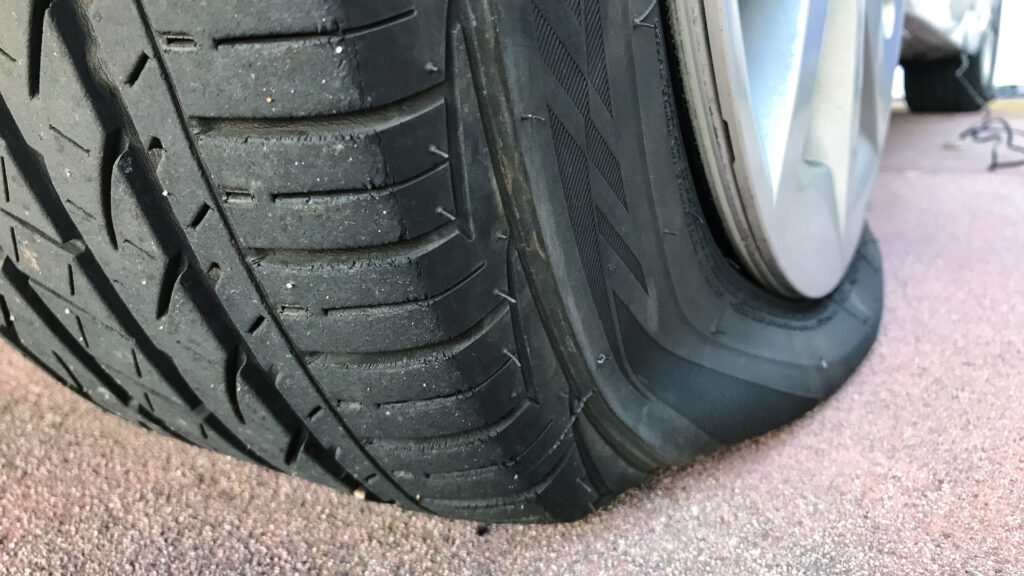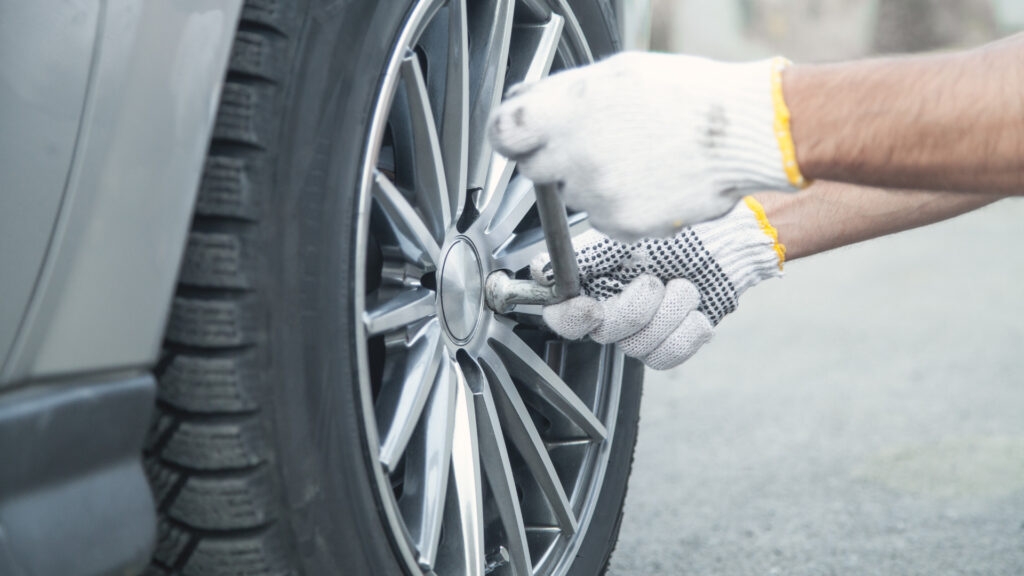Table of Contents Show
When traveling down the interstate at 65 miles per hour, the last thing you want to happen is a tire failure. Dry rot tires can lead to premature damage, resulting in dangerous situations.
Whether you drive a Ford Prius or a Newmar motorhome, you must regularly inspect your tires and properly maintain them to prevent dry rot.
Let’s look at how to spot and avoid dry rot tires.
What Is Tire Dry Rot?
Dry rot is a type of tire decay from overexposure to harmful chemicals and other types of conditions. It’s not like wood dry rot that spreads because of a fungus.
Dry rot tires can’t spread from one tire to another. But instead, it shows increased damage that allows air to escape the tire. This makes it almost impossible to keep it properly inflated, which could potentially lead to a blowout.
What Causes Tire Dry Rot?
You can’t repair dry rot tires. You have to replace them. So take the best care possible to prevent dry rot from occurring at all.
Typically, tires can last up to 10 years, but excessive exposure to heat and cold and exposure to harmful chemicals shortens their lifespan. This is why you’ll see many RVs with tire covers at campgrounds or storage facilities.
Lack of proper maintenance can also lead to dry rot tires. Driving with underinflated tires or putting too much weight on the tires can result in premature aging.

Tips to Avoid Dry Rot Tires
You don’t want to spend hundreds or thousands of dollars on new tires when you can prevent dry rot. These tips will help you avoid a huge expense and a dangerous blowout. Although not 100% guaranteed to prevent it, these suggestions will lower the risk.
Avoid Excessive Sunlight
Exposure to ultraviolet (UV) light can lead to dry rot tires. Sunlight combined with warm weather can cause the sidewall to age prematurely.
Always try to park in a garage or the shade. If you don’t use your vehicle for longer than a few days, use tire covers.
Avoid Extreme Temperatures
Both low and high temperatures can damage tires. Dry rotting will likely increase with temperatures above 68 degrees Fahrenheit and below 45 degrees.
Additionally, regular rapid temperature swings speed up the evaporation of those essential oils in the tire. Anytime the temperature changes over 15 degrees Fahrenheit in a couple of hours, dry rotting can occur.
If you live in locations with these conditions, take special care of your tires and inspect them more regularly.
Avoid Long Periods of No Use
Don’t let your vehicle sit idle for very long, if possible. But if you do put your RV in storage or have an antique car in the shed, don’t change your tires or perform basic maintenance based on mileage. Instead, follow a maintenance calendar regardless of how often you drive it.
A car, truck, or RV not driven often has oil and other fluids that sit and age even if the vehicle isn’t accumulating road miles. If you’re still taking care of your car when not in use, you know the tires will be ready for the road when the time comes.
Avoid Underinflation
Underinflated tires mean more of the rubber meets the road. This leads to increased wear on the tire tread, which generates excessive heat.
The increased heat can result in cracking and dry rot tires. This premature wear and overheating can also lead to complete tire failure, which can be extremely dangerous when driving.

Avoid Harmful Chemicals
When cleaning your tires, always read the product labels. Don’t use tire protectants or petroleum-based cleaning products.
These types of products degrade the weathering agents of the rubber, which could lead to cracking and dry rot. Be aware of the chemicals you put on your wheels.
Keep in Mind: What Are Super Single Tires? Let’s find out!
Inspect Tires Regularly
Finally, perform monthly inspections. Monitor the overall condition of the tires. Look for cracks, bulges, or wear in the tread and sidewalls. Pay attention to the color.
Perhaps take photos of your tires and compare the discoloration from month to month. Note any additional unnatural blemishes to prevent further damage.

How to Spot Dry Rot Tires
Even with all of the preventative maintenance and tips mentioned above, your tires will still wear down over time. If you think you might have dry rot tires, you may notice a few specific indications.
Tire Feels Brittle
Dry rot tires will be brittle. The oils in the tire leak out, which may result in pieces of rubber breaking away from the tire.
If any pieces crumble off, it’s a sure sign that your tire has dry rot, and you must replace it immediately.
Tread Is Cracked
Your tire’s tread is critical in the traction of the car. The tread is the rubber that makes contact with the ground. If it has cracks, you have reduced traction, which increases the risks of an accident or skid. In addition, these surface cracks usually indicate deeper ones you can’t see.
Sidewall Is Cracked
Whether you see cracks in an isolated part of the sidewall or extending around large portions of the hubcap, it’s a sign of dry rot.
Like cracked tire tread, cracked sidewalls can be problematic. Water and other contaminants can seep into the tire. So if you see any cracks in the sidewall, replace your dry rot tires.
Tire Color Is Faded
Finally, color is another good indicator of tire health. Gray tires may indicate dry rot. Sometimes the color fading is accompanied by cracked tread and sidewalls, but sometimes it’s not. So pay attention to the color when inspecting your tires.
Pro Tip: A good set of tires will completely change how your RV drives! Before you buy your next set, check out our RV Tires Buyers Guide
Should You Replace All Tires at the Same Time?
Almost every automotive shop will suggest replacing all four tires of an all-wheel drive (AWD) vehicle and both tires on the same axle of a two-wheel drive (2WD) vehicle simultaneously.
If one tire shows dry rot, the others will likely follow. However, apart from the potential dry rot of the other tires, there’s another reason to replace all tires at once.
Tires spin independently of one another. If a new tire has one tread depth and a used tire has a different tread depth, this can cause them to spin at different speeds, potentially damaging the drive train.
This means replacing all four tires on an AWD vehicle so the tread depth matches. On a 2WD vehicle, this means at least replacing the two tires on the same axle. You want to keep an even tread depth as much as possible.
How Much Is a New Tire?
New tires are expensive, but to prevent dry rot, spend the money upfront on top-quality tires. If you start with well-made tires, you’re less likely to have premature damage and wear if you follow the proper maintenance and care guidelines.
Tires for a standard vehicle like a Honda Civic or Toyota Camry won’t be nearly as expensive as tires for a larger vehicle like a Ford F250 or RAM 3500.
For example, a basic Goodyear Assurance All-Season tire costs around $100. However, a Goodyear Wrangler DuraTrac tire for a larger truck costs close to $300.
RVs have a wide range of tire sizes and ratings as well. So the tire you put on a 27-foot travel trailer with a GVWR of 8,000 pounds isn’t the same as on a 37-foot Class A motorhome with a GVWR of 30,000 pounds.
An ST255/85R16 Goodyear Endurance trailer tire with an E load rating costs around $245. But a 245/75R22.5 Goodyear Endurance RSA all-position tire for motorcoaches costs around $675.
Prevent Dry Rot Tires, Be Diligent With Tire Maintenance and Care
Whether you have to fork out $400 or $2,000 for four new tires, you can prolong this expense by properly caring for your vehicle’s tires.
Dry rot tires are expensive to replace and can cause serious damage in the event of a tire failure. You want to keep yourself and other drivers safe on the road.
Have you recently inspected your tires to check for dry rot?






